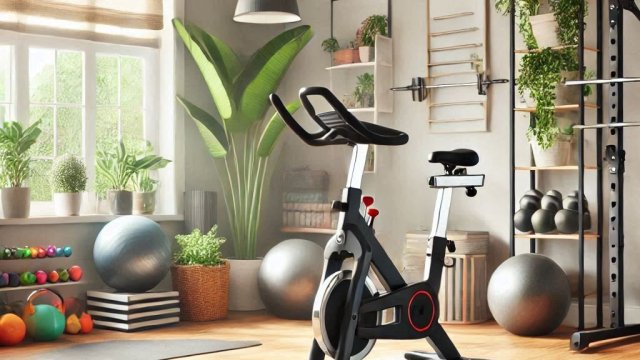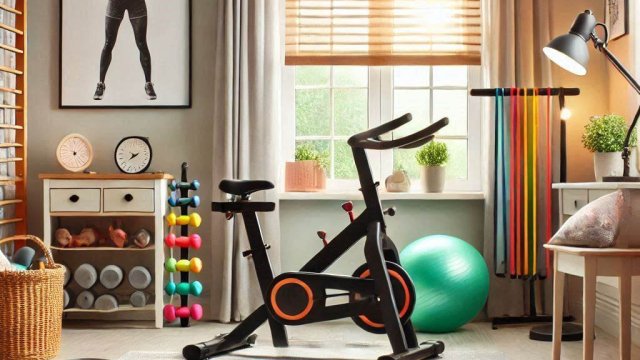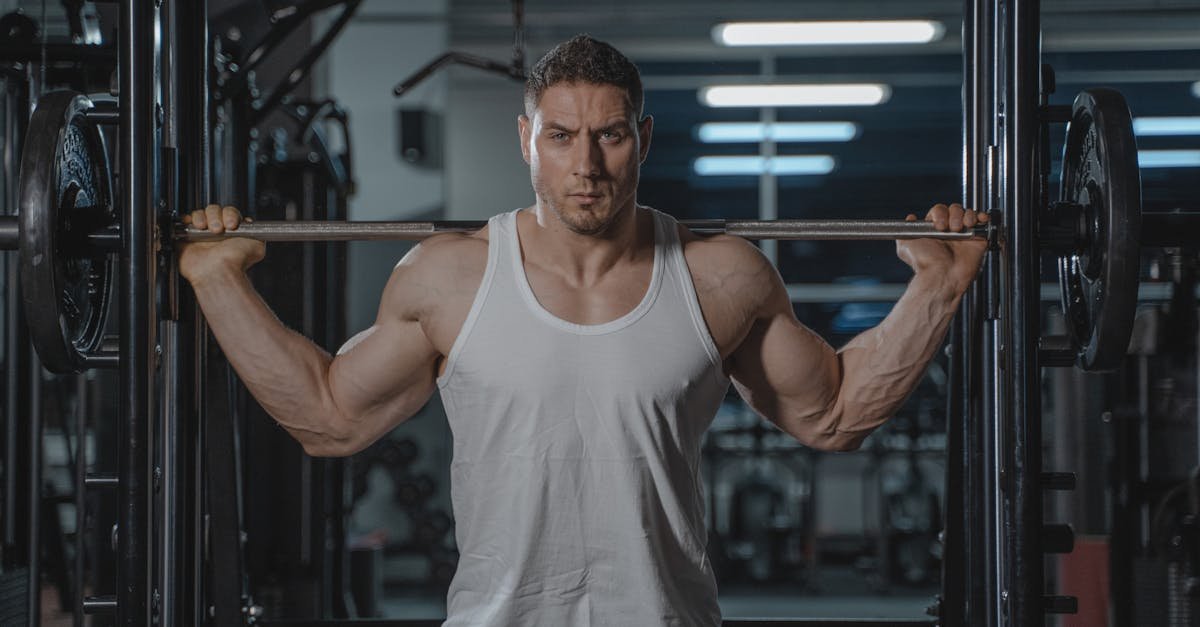Walking into a gym can feel overwhelming, especially with all the machines lining the walls. It’s easy to get lost in a sea of options when you’re trying to figure out which cardio machines will best help you reach your fitness goals. I remember my first time at the gym, staring at the treadmill and elliptical, unsure of where to start.
Overview of Cardio Machines
Cardio machines play a vital role in achieving fitness goals at the gym. They provide varied workouts that improve cardiovascular health, burn calories, and increase endurance. Familiarity with different machines helps in selecting the best options based on personal preferences and fitness levels.
Treadmills
Treadmills remain one of the most popular gym machines for cardio workouts. They simulate walking or running. Users can adjust speed and incline, catering to both beginners and advanced athletes. I often start with a steady pace and gradually increase intensity. A 30-minute session can burn approximately 300-500 calories, depending on weight and workout intensity.
Ellipticals
Ellipticals offer a low-impact alternative to running. These machines involve both the upper and lower body, enhancing calorie burn while minimizing stress on joints. When using ellipticals, I focus on maintaining a steady rhythm and incorporating changes in resistance for variety. A 30-minute session burns about 250-400 calories.
Stationary Bikes
Stationary bikes provide another effective cardio option, particularly for lower body workouts. They come in upright and recumbent styles. I prefer upright bikes for a more intense workout. Sessions can vary, with a high-intensity interval training (HIIT) approach burning around 300-600 calories in 30 minutes.
Rowing Machines
Rowing machines engage multiple muscle groups, making them efficient for cardiovascular and strength training. I find intervals on this machine particularly effective. Proper technique ensures maximum calorie burn, averaging around 300-500 calories in a 30-minute workout. This machine delivers a full-body workout while enhancing endurance.
Arc Trainers
Arc trainers provide a unique motion that combines the best of a treadmill and an elliptical. They offer low-impact workouts and adjustable incline levels for varied intensity. I enjoy using them for longer durations, as they promote stability and muscle engagement. Expect a calorie burn of 250-400 calories for a 30-minute session.
Stair Steppers
Stair steppers mimic real-life stair climbing, targeting the lower body significantly. These machines help build leg strength while providing an effective aerobic workout. I’ve found that even 20-30 minutes on the stair stepper can result in a calorie burn of about 300-500 calories, depending on the intensity.
Conclusion
Selecting the right cardio machine can transform workout routines. It’s essential to identify personal preferences and fitness goals first. Whether it’s a treadmill, elliptical, stationary bike, rowing machine, arc trainer, or stair stepper, each machine offers unique benefits. Adopting a structured workout regimen enhances cardio fitness while supporting overall health and wellness.
Treadmills
Treadmills stand out as one of the top cardio machines, delivering a versatile workout that fits various fitness levels. I appreciate how treadmills allow users to adjust speed and incline, leading to effective cardiovascular conditioning.
Benefits of Treadmill Workouts
Treadmill workouts offer numerous advantages, including:
- Customizable Intensity: Adjusting the speed and incline creates tailored workouts for beginners and advanced users. For instance, walking at a 3 mph pace on a flat surface engages different muscles compared to sprinting at 8 mph with a steep incline.
- Calorie Burn: Engaging in treadmill workouts for 30 minutes can burn approximately 300 to 500 calories. Higher intensity workouts increase this calorie expenditure further.
- Joint-Friendly: Most treadmills provide a cushioned surface, which reduces impact during running or walking, making this one of the best home gym equipment options for cardio.
- Built-in Programs: Many treadmills feature pre-set workout programs. These programs adjust settings automatically, adding variety and preventing workout monotony.
Tips for Effective Treadmill Use
Using a treadmill effectively involves adhering to several strategies:
- Warm Up Properly: Start with a 5-10 minute warm-up at a low speed to prepare the body for a more intense workout.
- Maintain Good Posture: Keep my head aligned with my spine and avoid leaning on the handrails to maximize workout efficiency.
- Incorporate Intervals: Alternating between high-intensity sprints and lower intensity walking or jogging boosts calorie burn and enhances cardiovascular fitness.
- Utilize Incline: Increasing incline simulates hill workouts, engaging different muscles and intensifying calorie burn.
- Stay Hydrated: Keep water nearby to maintain hydration, especially during longer workouts.
By following these tips, I find it easier to maintain consistency in my treadmill workouts.
Avoiding Mistakes
Common pitfalls arise during treadmill workouts, and avoiding them promotes efficient use:
- Skipping Warm-Ups: Failing to warm up increases the risk of injury and reduces workout effectiveness. Warming up allows the body to prepare for intense activity.
- Over-Reliance on Handrails: Leaning on handrails can lead to poor posture and reduced engagement of core muscles. Instead, focus on maintaining proper alignment and balance.
- Ignoring Body Signals: Not listening to the body’s signals can lead to overexertion. It’s crucial to lower intensity if fatigue sets in during a workout.
By addressing these common mistakes, I can enhance my treadmill workout effectiveness and overall experience.
Stationary Bikes
Stationary bikes provide an effective means of cardio workouts, targeting the lower body and offering two main types: upright and recumbent bikes. The variety allows for different riding styles and body support, catering to various fitness levels and preferences.
Types of Stationary Bikes
- Upright Bikes
Upright bikes mimic the traditional bicycle position, offering a more intense workout. Riders engage core muscles and upper body while cycling, making it suitable for users targeting overall fitness.
- Recumbent Bikes
Recumbent bikes feature a reclined position, providing back support and reducing strain on joints. This type is ideal for beginners, seniors, or anyone recovering from injury, focusing on lower body strength.
Advantages of Cycling for Cardio
Cycling offers numerous benefits as a cardio workout.
- Caloric Burn
High-intensity cycling can burn between 300-600 calories in 30 minutes, depending on intensity and resistance levels. This effective calorie-burning potential supports weight loss and fat reduction.
- Low Impact
Cycling is a low-impact exercise, reducing stress on joints while engaging lower body muscles. This makes it suitable for various individuals, including those with knee or hip issues.
- Versatility
Stationary bikes offer adjustable resistance, allowing users to tailor workouts for different intensity levels, making them some of the best home gym equipment for legs and overall cardio fitness.
- Convenience
Stationary bikes provide a convenient option for home workouts. Especially beneficial for those with time constraints, they fit well into busy schedules by allowing workouts without needing to leave home.
- Mental Health Benefits
Cycling can improve mood and reduce stress. The release of endorphins during exercise enhances overall well-being, making it a valuable addition to regular fitness routines.
Using stationary bikes as part of a fitness plan can lead to significant improvements in cardiovascular health and lower body strength while providing a practical solution for those unsure about what machines to use at the gym for cardio.
Ellipticals
Ellipticals serve as a versatile machine for cardio workouts, providing a low-impact exercise option that engages both the upper and lower body. This equipment minimizes stress on joints while delivering an effective cardiovascular workout.
How Ellipticals Work
Ellipticals operate through a smooth, gliding motion that mimics walking or running without the harsh impact associated with other cardio machines. Users stand on pedals that move in an oval path, allowing natural leg movement. Most machines include adjustable resistance levels and incline options, providing customizable workout experiences tailored to fitness goals. Many ellipticals also feature moving handlebars for upper body engagement, enhancing calorie burn during sessions.
Best Practices for Elliptical Training
- Adjust Settings: Set the resistance and incline according to fitness levels. Higher resistance increases effort, while incline targets different muscle groups.
- Proper Posture: Maintain an upright stance with shoulders back. Engage core muscles for better stability and support.
- Stride Length: Use a comfortable stride length. Short strides engage different muscle groups, while longer strides work the quads and glutes more intensely.
- Interval Training: Incorporate high-intensity interval training (HIIT) by alternating between periods of higher intensity and lower intensity. This method improves endurance and ramp-ups calorie burn.
- Hydration: Keep water nearby, and drink during workouts to maintain hydration levels.
- Cooldown: Gradually lower the intensity at the end of the workout, allowing heart rate to return to normal. Include stretching to enhance recovery.
- Over-reliance on Handrails: Avoid holding onto the handrails too tightly. This limits engagement of core and lower body muscles.
- Neglecting Resistance: Relying solely on the machine’s built-in programs may lead to stagnation. Periodically increase resistance to challenge muscles.
- Skipping Warm-Ups: Don’t skip warm-up exercises. A proper warm-up prevents injuries and enhances performance during workouts.
- Focusing Only on Lower Body: While ellipticals engage the legs, neglecting upper body movement reduces overall effectiveness. Use the handlebars actively for full-body engagement.
- Ignoring Goals: Without setting specific fitness goals, workouts may lack direction. Define goals like calorie burn or distance covered for better motivation and results.
By implementing these best practices and avoiding common mistakes, ellipticals become a powerful tool for cardio training. The combination of low impact and full-body engagement fosters effective workouts that target both cardiovascular health and muscle engagement.
Rowing Machines
Rowing machines stand out as exceptional equipment for effective cardio workouts. They provide full-body engagement, making them some of the best home gym equipment for cardio and muscle building.
Rowing for Full-Body Fitness
Rowing engages multiple muscle groups including the legs, core, back, and arms. This full-body workout not only enhances strength but also boosts cardiovascular health. I can burn approximately 300-500 calories in just 30 minutes on a rowing machine. Rowing offers a low-impact alternative to running, reducing strain on the joints while promoting endurance and muscle tone. Many fitness enthusiasts consider it one of the best home gym equipment options for full-body workouts.
Proper Rowing Techniques
To maximize benefits from a rowing machine, using proper techniques is crucial. I focus on these fundamental steps:
- Positioning: I sit with my back straight, feet secured in foot straps, and grip the handle comfortably.
- The Catch: From the starting position, I bend my knees and slide forward, keeping my shins vertical.
- The Drive: I press through my heels, extend my legs, lean back slightly, and pull the handle towards my chest.
- The Finish: At the end of each stroke, I lean back slightly and hold the handle close to my body.
- The Recovery: I extend my arms fully, then lean forward and bend my knees to return to the starting position.
Practicing this sequence consistently helps enhance my rowing technique, ensuring I get the most effective workout.
Tips for Effective Rowing Workouts
- Start Slow: I gradually increase intensity, focusing on form over speed.
- Incorporate Intervals: I mix short bursts of intense rowing with periods of slower-paced rowing to boost calorie burn.
- Monitor Heart Rate: Keeping track of my heart rate ensures I stay within my target zone for optimum cardiovascular benefits.
- Stay Hydrated: Drinking water before and after my workout helps me maintain performance.
- Ignoring Form: I ensure I prioritize technique to prevent injuries and maximize results.
- Overusing Arms: Focusing too much on arm motion diminishes lower body engagement; I aim for a balanced stroke.
- Neglecting Warm-ups: I always warm up before intensive rowing sessions to prepare my muscles.
By addressing these common pitfalls, I can significantly enhance my rowing workouts, promoting better fitness outcomes.
Rowing machines represent one of the best home gym equipment choices for anyone looking to combine strength and cardio efficiently. With effective techniques and mindful practices, incorporating rowing in my fitness routine yields impressive results.
Overall, rowing machines provide a versatile option for achieving cardio goals while also building strength and endurance.
Stair Climbers
Stair climbers are effective cardio machines that replicate the motion of climbing stairs, targeting the lower body while delivering an intense cardiovascular workout. Using stair climbers can enhance stamina and strength, making them valuable for any fitness routine.
Why Choose Stair Climbers?
Stair climbers provide several benefits that contribute to fitness goals. They engage multiple muscle groups, particularly the glutes, quadriceps, and calves. Using these machines can burn about 300-500 calories within 20-30 minutes, making them excellent for those focused on weight loss or overall cardiovascular health. Additionally, stair climbers offer a low-impact alternative to traditional running, reducing stress on joints while still delivering an effective workout.
Techniques for Maximum Benefits
To maximize the benefits of stair climbers:
- Adjust the Intensity: Start at a moderate pace and gradually increase speed and resistance.
- Maintain Proper Form: Keep your back straight and shoulders relaxed. Your feet should land flat on the pedals.
- Engage Core Muscles: Tightening abdominal muscles helps stabilize your body, improving efficiency.
- Incorporate Interval Training: Alternate between high and low intensity to boost calorie burn. For example, try 1 minute of high intensity followed by 2 minutes of moderate pace.
- Stay Hydrated: Keep a water bottle nearby and take sips during workouts to maintain hydration levels.
Avoiding Mistakes
Common pitfalls when using stair climbers include:
- Neglecting Warm-Up: Skipping warm-up increases the risk of injury. Begin with a 5-minute warm-up at a low intensity.
- Using Handrails Excessively: Leaning on handrails can reduce workout effectiveness. Keep hands lightly touching for balance.
- Overtraining: Listen to your body. If experiencing fatigue or joint pain, reduce intensity or take rest days.
- Ignoring Foot Placement: Proper foot positioning prevents injury. Ensure feet are flat and evenly distributed on the pedals.
By focusing on these techniques and avoiding common mistakes, stair climbers can enhance both strength and cardiovascular fitness. As efficient home or gym fitness equipment, stair climbers contribute significantly to achieving cardio goals.
Conclusion
Finding the right cardio machine at the gym can transform your workout experience. Each option brings its own set of benefits that can help you reach your fitness goals. Whether you prefer the intensity of a treadmill or the low-impact nature of an elliptical, it’s all about what resonates with you.
I encourage you to experiment with different machines to discover what you enjoy most. Remember to focus on your form and listen to your body as you explore these options. The journey to better health should be enjoyable and sustainable. Embrace the process and make it your own.
Frequently Asked Questions
What should I consider when choosing a cardio machine for the first time?
When choosing a cardio machine, consider your fitness goals, physical condition, and personal preferences. Treadmills offer customizable options, while ellipticals provide low-impact workouts. Rowing machines engage multiple muscle groups, and stationary bikes can be easier on the joints. Think about what feels comfortable and enjoyable for you to stay motivated.
How many calories can I burn using a treadmill?
Using a treadmill, you can burn approximately 300-500 calories in 30 minutes, depending on your speed, incline, and intensity. Customizing your workout with varying speeds and inclines can help maximize calorie burn and improve fitness.
Are ellipticals good for beginners?
Yes, ellipticals are an excellent choice for beginners. They offer low-impact workouts that engage both the upper and lower body while being easier on the joints. The smooth, gliding motion makes it accessible for those new to exercising or with previous injuries.
What are the benefits of using a stationary bike?
Stationary bikes provide significant caloric burn, typically ranging from 300-600 calories in a high-intensity session. They are low-impact and can be suitable for all fitness levels, making them ideal for strengthening the lower body and improving cardiovascular health.
How does rowing compare to other cardio machines?
Rowing is a full-body workout that effectively engages multiple muscle groups, enhancing strength and cardiovascular health. Unlike machines that focus on specific areas, rowing can burn about 300-500 calories in 30 minutes, making it a comprehensive choice for fitness.
What are some common mistakes when using a treadmill?
Common mistakes when using a treadmill include skipping warm-ups, over-reliance on handrails, and ignoring body signals. These can hinder your workout effectiveness. Focus on maintaining good posture, varying speed and incline, and listening to your body for optimum results.
Can stair climbers help with weight loss?
Absolutely! Stair climbers mimic climbing stairs and can burn approximately 300-500 calories in 20-30 minutes. They engage multiple muscle groups and are effective for weight loss and cardiovascular health, especially when combined with proper form and interval training.
How can I maximize my workout on a rowing machine?
To maximize your rowing workout, focus on proper technique: positioning, the catch, the drive, the finish, and the recovery. Start slow, incorporate intervals for intensity, monitor your heart rate, and stay hydrated. Proper form is crucial to avoid injury and achieve better results.










